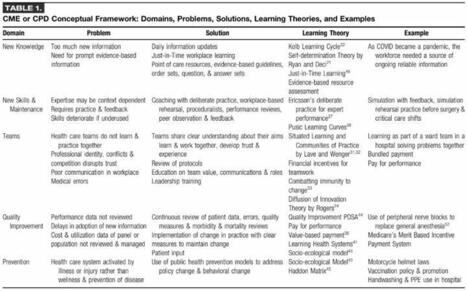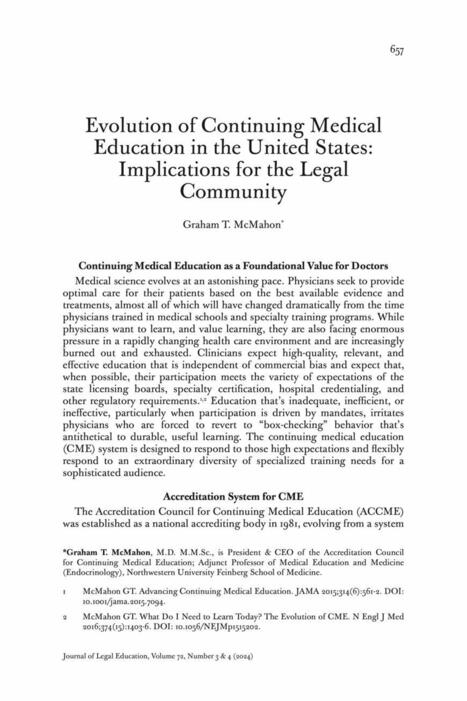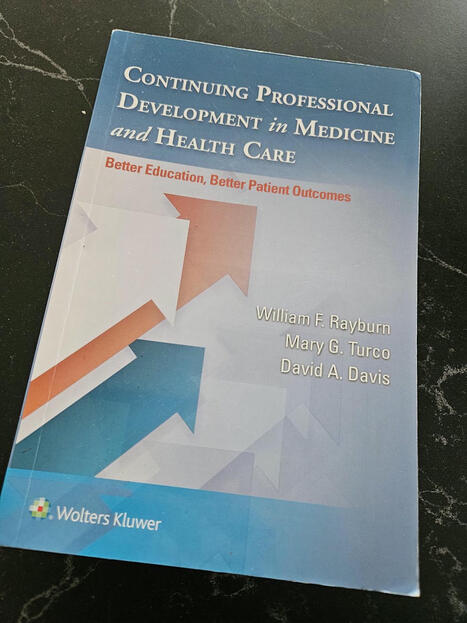100 Milestones of Physical Therapy 1921 1921 APTA’s Founders Meet At Keens Chophouse In New York City. APTA’s founders met at Keens Chophouse in New York City. The participants decided to create an association with the name American Women’s Physical Therapeutic Association. Dues were established at $2. 1921 Mary McMillan Is Elected The First President Of The American Women’s Physical Therapeutic Association. World War I had just ended. Throughout the war, reconstruction aides, the predecessors to modern physical therapists, worked tirelessly to do their part, treating the many casualties of war and getting soldiers back on their feet. These strong women had proven their value as medical professionals – war heroes –..Read More 1921 The Association’s Journal, P.T. Review, Debuts. The association’s journal, P.T. Review, debuted in 1921. The issue was held in production awaiting election results for the new officers and executive committee. Mary McMillan was elected president. Free to members, annual subscriptions to the quarterly publication were available to the public for $1. The journal’s name eventually evolved..Read More 1922 1922 The AWPTA Becomes The American Physiotherapy Association. The AWPTA had closed out its first year, which was a busy one. The members were planning for their first annual convention that summer. They also were seeking official recognition from the American Medical Association, were working to lay a strong foundation for the profession, and emphasizing the need to..Read More 1922 First Annual Conference Held In Boston. The association’s first annual conference was held in Boston, September 13-16, at the Boston School of Physical Education. Sixty-three reconstruction aides attended. The association’s name was changed to American Physiotherapy Association to be more inclusive. 1926 1926 P.T. Review Changes The Name To Physiotherapy Review. In 1926 Gertrude Beard was elected president of APA. Under her leadership, APA saw much change. Significantly, she was the first president who had not served as a reconstruction aide. With her election came a shift in association leadership from the east coast, where it had traditionally been concentrated, to..Read More 1926 Franklin D. Roosevelt Establishes The Georgia Warm Springs Foundation. Franklin D. Roosevelt contracted polio in 1921. In 1926, Roosevelt was introduced to Alice Lou Plastridge. She was an experienced physical therapist in the field of polio and had been successfully treating him when he began visiting Warm Springs, Georgia, to swim in the thermal spring waters there after hearing..Read More 1927 1927 NYU Creates Bachelor Of Science Program For Physical Therapists. As the profession continued to grow and APA continued to advocate for stronger standards and increased education, the New York University became the first to launch a full, four-year bachelor of science program for physical therapists. Graduates now earned a BS degree, raising the level of education available and with..Read More 1928 1928 Standards For Accreditation Are Developed. Ever focused on improving the profession and recognizing the importance of standardization in order to do so, APA developed the first standards for accreditation, with guidance of John Stanley Coulter. Most accredited institutions then were hospital-based and awarded postbaccalaureate certificates. 1935 1935 APA Adopts A “Code Of Ethics And Discipline.” Following closely on the heels of establishing an outside registry came APA’s first Code of Ethics and Discipline, adopted at its annual conference in Atlantic City, New Jersey. This code not only expanded on the primacy of the physician’s diagnosis and prescription in carrying out physical therapy treatments, but it..Read More 1935 The American Registry For Physical Therapy Technicians Is Created. One issue that kept nagging at APA leaders was concern about the credentialing process. After a few failed attempts to address it, a viable solution came along. In 1935, under the guidance of John Coulter, author of the Minimum Standard for a Physical Therapy Department of a General Hospital, the..Read More 1940 1940 A Major Shift In Educational Programs Occurs. In 1940 the majority of physical therapy educational programs shifted from the hospital to the university setting. This marked the start of an important new trend in physical therapist education. 1940 Catherine Worthingham Becomes Wartime President Of APA. Catherine Worthingham, a noted Stanford educator, became the association’s two-term president during World War II. She served an unprecedented five years as president from 1940 through 1944 at the request of the executive committee, which felt that the war years were no time to install new, inexperienced officers. Worthingham was..Read More 1941 1941 First Special Interest Sections Meet At Annual Conference. The first special interest sections met at the association’s annual conference in Palo Alto, California. 1941 PTs Contribute During World War II. In the summer of 1941, six months before the bombing of Pearl Harbor, Emma Vogel — who began her Army career as a reconstruction aide, was trained by Mary McMillan at Reed College in Oregon, and was a founding figure in the physical therapy profession — initiated the first War..Read More 1941 The First Physical Therapy CE Programs Are Held. APA’s annual meetings during the war years became more professional, offering continuing education programs at Stanford University in connection with APA’s 1941 annual conference. Thirty-seven members signed up for the 1941 program, gaining credits in advanced kinesiology, therapeutic gymnastics, skeletal muscle and motor activity in health and diseases, and “the..Read More 1943 1943 The Special Women’s Medical Service Corps Program For African-Americans Launches. World War II was raging and there was a continuing need to quickly increase the number of trained physical therapists to meet the demands of war. The success of Emma Vogel’s 1941 War Emergency Training Course of WW II led to the launch of several more across the country, among..Read More 1944 1944 First Official Headquarters Founded. The association moved into its first official headquarters in New York City, where the organization was founded. Mildred Elson became the first executive director of APA. 1944 House Of Delegates Created At 1944 Annual Meeting. The association’s House of Delegates was created at the 1944 annual meeting. Margery L. Wagner of California was elected first chair of the body. 1947 1947 House Of Delegates Votes To Change Name To APTA. The House of Delegates voted to change the association’s name to the American Physical Therapy Association from the American Physiotherapy Association, which had been its name since 1922. 1948 1948 Physiotherapy Review Is Renamed Physical Therapy Review. In 1948 APA’s widely respected journal went from a bimonthly to a monthly publication, nearly doubling the number of pages from 320 to 584 annually. At the same time the publication’s name was changed to Physical Therapy Review. 1949 1949 The First Edition Of “Muscles Testing And Function” Is Published. Florence P. and Henry O. Kendall were pioneers in research in the field of physical therapy, conducting groundbreaking research at the height of the polio epidemic to establish baselines for normal function in children and young adults. They believed that no modern PT should treat “abnormal” conditions without knowing what..Read More 1950 1950 Korean War Begins. Congress had just passed a law establishing the Women’s Medical Specialist Corps (WMSC) within the U.S. Army in 1947. Major Emma E. Vogel was chief officer of the corps and promoted to the rank of colonel. This law provided for the first time full military recognition for women physical therapists..Read More 1951 1951 First Planning Session Of The World Congress For Physical Therapy. The World Confederation for Physical Therapy held its first formal meeting in Copenhagen. Mildred Elson, APTA’s first executive director, was elected to serve as WCPT’s first president. Five years later, in 1956, APTA would cohost the second WCPT World Congress in New York City, where Elson would be one of..Read More 1954 1954 APTA Develops Standardized Competency Exam For State Licensing Boards. Recognizing the need to protect and advance the profession, APTA leadership began to push more strongly for state practice acts that would regulate the use of relevant occupational titles such as physical therapy and control the right to practice within those regulated professions in the name of protecting the public..Read More 1955 1955 Salk Vaccine For Polio Is Introduced. By the 1950s, poliomyelitis was surging, with 58,000 new cases, and 3,000 deaths, reported in the United States in 1952 alone. At the same time physician Jonas Salk was continuing work to develop his vaccine to combat the polio epidemic. In 1953, his preliminary tests, carried out at the D...Read More 1955 First House-Approved Membership Section Is Founded. The 1950s brought with them a significant spirt of growth for APTA. Membership was increasing at a significant rate. Similarly, there was immense growth in state chapters. In 1951 all but four states or territories had at least one chapter, and by 1955 all of them had representation. (Early on,..Read More 1957 1957 The Physical Therapy Fund Is Established. Over the years there had been many articles in Physical Therapy Review about physical therapists providing better scientific data on their work, one of the hallmarks of a true profession. A few members obliged with worthy contributions to the research literature. Among the more impressive works were Margaret Moore’s three-part..Read More 1960 1960 First Two-Year Graduate Program In Physical Therapy Launched. The earliest effort to launch a two-year graduate program for the basic education of the physical therapist appeared at Western Reserve University (now Case Western Reserve University) in Cleveland, Ohio, in 1960. Catherine Worthingham approached the university because it already had established graduate programs in other health professions, including speech..Read More 1964 1964 First Mary McMillan Lecture. The earliest and most prestigious recognition offered by APTA for achievement is the Mary McMillan Lecture Award, which was established in 1962 by the Board of Directors in memory of the association’s beloved first president and physical therapy trailblazer. Mildred O. Elson delivered the first lecture in 1964, and Helen..Read More 1964 1962/1964 Physical Therapy Review Evolves Again. In 1961, Helen J. Hislop took over as editor of Physical Therapy Review. With that came a reexamination of the publication’s name. From time to time someone would suggest that a new name was needed, one that would include the designation “journal” and the name of the association in its..Read More 1965 1965 Medicare Legislation Is Enacted. Among the many initiatives launched during Lyndon Johnson’s presidency, none had a greater impact on physical therapists than enactment in 1965 of the Medicare and Medicaid programs. Medicare (which was appended to the 1935 Social Security Act as Title XVIII) provided federal funding for many of the medical costs of..Read More 1966 1966 The First PTs Go To Vietnam. Since John F. Kennedy’s inauguration as president in 1961, the U.S. military involvement in Vietnam had grown, culminating in the deployment of American ground troops in the spring of 1965 under President Lyndon Johnson. The first physical therapist on the scene was Army Medical Specialist Corps Colonel Barbara Gray, a..Read More 1967 1967 First Lucy Blair Service Award Established. The Lucy Blair Service Award was established in 1969 to honor the long and dedicated service of Lucy Blair, to be given to one or more members each year for contributions of exceptional value to the association. Blair was the sole first recipient in 1969, and service pins were awarded..Read More 1969 1969 First Two Classes Of PTAs Graduate And Enter The Workforce. The first two classes of physical therapist assistants (PTAs) graduated and entered the workforce. The first PTA education programs had been established earlier at Miami-Dade Community College in Florida and St. Mary’s Junior College in Minnesota (now St. Catherine University). 1970 1970 Temporary Affiliate Membership Offered To PTAs. In 1964 APTA’s Board of Directors appointed an ad hoc committee to look into bringing non-physical therapist assistive personnel into some kind of formalized relationship with physical therapists. As a result of the committee’s favorable findings, APTA in 1967 adopted a policy statement that set the foundations for the birth..Read More 1970 Headquarters Relocated To Washington, D.C. APTA relocated its headquarters from New York City, where the association was founded, to Washington, D.C., in order to have a stronger advocacy presence on Capitol Hill. 1971 1971 American Registry Of Physical Therapists Dissolved. In the early days of the profession, before APTA had created its own system of professional certification, registration through the American Registry of Physical Therapists (ARPT) (formerly known as the American Registry of Physical Therapy Technicians) — controlled by the American Medical Association (AMA) — had provided a limited form..Read More 1972 1972 Social Security Amendments Of 1972. The year 1972 was a pivotal one for the Social Security Administration. On October 30 that year, President Richard Nixon signed into law the Social Security Amendments of 1972, which provided Independent billing authority for physical therapists added to Medicare Part B program, with a $100 cap on services per..Read More 1973 1973 Physical Therapy Political Action Committee Created. APTA was no stranger to working to shape policy, and leadership had always well understood the importance of maintaining a strong voice on Capitol Hill. To protect and champion the needs of the profession and its members APTA needed to be heard by lawmakers. That had been one reason for..Read More 1973 NYU Launches First PhD Program In Physical Therapy. New York University has rightly been called a trailblazer in the history of physical therapy education. It holds the distinction of having started not only the first four-year bachelor’s degree program for physical therapists in 1927, but also the first postprofessional PhD program for physical therapists in 1973, under the..Read More 1974 1974 First PT Department At A Historically Black College Or University Established At Howard University. Early in physical therapy education, individuals of racial or ethnic minority groups attended predominantly white institutions because no minority-serving institutions had established physical therapy programs. Prior to the 1960s, due in part to institutional discrimination, there were fewer opportunities for minority students than there were for their white counterparts to..Read More 1975 1975 APTA’s House Of Delegates Embraces The Concept Of Specialization. In her McMillan lecture at APTA’s 1975 annual conference Helen J. Hislop made clear that without its own mechanism for producing certified clinical specialists the profession would be challenged and potentially overshadowed by other health care disciplines. She called on her colleagues to develop programs that would train and certify..Read More 1975 Education For All Handicapped Children Act (Public Law 94-142) Becomes Law. On November 29, 1975, President Gerald Ford signed into law the Education for All Handicapped Children Act, later called the Individuals with Disabilities Education Act (IDEA). This was significant to the physical therapy profession because with it its passage physical therapist practice began moving increasingly into the public school systems...Read More 1975 “The Not So Impossible Dream” McMillan Lecture Delivered By Helen J. Hislop. With widening access to health care and momentous advances in medicine and medical technology, a new health care environment was emerging. One of its more notable features was the explosion of information, which was rapidly overwhelming the capacity of most generalists to keep even nominally informed in all areas. Whether..Read More 1976 1976 First Combined Sections Meeting Held In Washington, D.C. The first Combined Sections Meeting (CSM) was held in Washington, DC. It drew more than 1,000 attendees. By 2018, CSM was attracting more than 17,000 attendees per year. 1978 1978 APTA Brings Academic Accreditation “In House.” APTA’s collaborative arrangement for accreditation of physical therapy education programs that had been worked out in 1959 with the American Medical Association’s Council on Medical Education (CME), which originally was the sole accrediting agency, had not proved satisfactory, and the resulting friction was wearing the relationship down. Former APTA president..Read More 1979 1979 The Commission For Certification Of Advanced Clinical Competence Appointed By House Of Delegates. In 1978, as a part of APTA’s efforts to establish a mechanism within the physical therapy profession for training and certifying clinical specialists, the association’s Task Force on Clinical Specialization produced a specialist certification program designed to give formal recognition to individuals with advanced knowledge, skills, and abilities in a..Read More 1979 PT Fund Evolves Into The Foundation For Physical Therapy. Despite an enthusiastic launch in 1957, the PT Fund had been struggling in its first two decades, disbursing less than $80,000 in grant funds toward its goal to foster scientific, literary, and educational advances in physical therapy. Charles Magistro, who had completed a term as APTA president in 1976, recognized..Read More 1980 1980 House Of Delegates Sets 1991 As Target For Raising Minimum Entry-Level Education To Postbaccalaureate Degree. The profession’s efforts to enhance postbaccalaureate education in physical therapy are at least as old as the mid-1940s, when Stanford University pioneered a post-entry-level certificate program in physical therapy. Other schools followed with postbaccalaureate certificate programs, notably at Boston University, the University of Southern California, New York University (NYU), and..Read More 1981 1981 World War I Reconstruction Aides Made Veterans. The reconstruction aides of World War I played an integral role in the war effort. They often worked 14-hour days caring for the wounded, with their workload growing as the war raged on. By the end of the war the aides had treated thousands of wounded. After World War I..Read More 1981 First Henry O. And Florence P. Kendall Practice Award For Outstanding Achievement In Clinical Practice Presented. The Henry O. Kendall and Florence P. Kendall Award for Outstanding Achievement in Clinical Practice originally was developed by APTA’s Maryland Chapter to recognize outstanding clinicians for excellence in clinical practice. The award celebrates the nationally recognized husband and wife clinician team who were prominent leaders in physical therapy. Through..Read More 1982 1982 Catherine Worthingham First Recipient Of Catherine Worthingham Fellow Designation. Catherine Worthingham was the first recipient of the fellow program that bears her name. The Catherine Worthingham Fellow designation (FAPTA) is the highest honor among APTA’s membership categories. 1983 1983 The House Of Delegates Approves Physical Therapist Assistant Affiliate Special Interest Group. The assemblies within the House of Delegates came about as a means of allowing physical therapist assistant members a structure through which they could meet their unique needs. In 1983 several affiliate members, including Virginia May, Cheryl Carpenter, and Tricia Garrison, petitioned the House for recognition as a nonvoting component,..Read More 1983 APTA Purchases And Moves To New HQ In Alexandria, Virginia. APTA purchased and moved to new buildings at 1111 North Fairfax Street in Alexandria, Virginia, with two neighboring buildings being purchased in 1993 and 1996. This marked the first time the association owned the buildings that house its headquarters. 1985 1985 First Exams For Specialist Certification Held. As APTA’s special interest sections developed, a natural extension was the continued growth of specialist certification. The complex process of creating the appropriate mechanism for voluntary certification, which started in the mid-1970s, began to bear fruit in 1985, when the first three candidates — Linda Crane, Scot Irwin, and Meryl..Read More 1988 1988 Minority Scholarship Fund Established. In 1986, as one of its efforts to address the scarcity of financial support for minority students enrolled in physical therapy education programs, APTA’s Office of Minority Affairs began working with the Foundation for Physical Therapy to establish the Minority Scholarship Fund. This was in response to a recommendation from..Read More 1989 1989 Affiliate Assembly For PTAs Is Established. The assemblies within APTA’s House of Delegates came about as a means of affording physical therapist assistants — who since 1973 had been granted affiliate membership in the association —- a structure within the organization. In 1983 several affiliate members, including Virginia May, Cheryl Carpenter, and Tricia Garrison, petitioned the..Read More 1989 Marquette Challenge Launched. The Marquette Challenge was created in 1989 by physical therapy students at Marquette University as an annual student-led fundraiser to support physical therapy research through the Foundation for Physical Therapy. The idea was for physical therapy programs to compete against each other to raise money during each yearly campaign. The..Read More 1990 1990 The Americans With Disabilities Act Of 1990 Becomes Law. Equal opportunity in employment was federally mandated in 1973, but it soon became apparent that lack of specific language and implementation guidelines made progress toward nondiscrimination extremely slow. Subsequent efforts to make what were widely agreed to be basic human rights available culminated in 1990 when on July 26 President..Read More 1991 1991 Student Assembly Formed. The Student Assembly was formed to enhance the role of student members and lend a voice to the future leaders of the profession. 1992 1992 First National Physical Therapy Month. Spurred by requests for a national celebration of physical therapy by the House of Delegates dating as far back as the mid-1960s, APTA and participating components began to celebrate Physical Therapy Week in the early 1980s. The week was initially observed in conjunction with APTA’s annual conference in June and..Read More 1993 1993 PT Magazine Launched. As the academic rigor of APTA’s scientific journal increased over the years, non-scientific topics that focused more on news of the profession were inevitably displaced. The existing Progress Report had been created in the early 1970s to cover news and ongoing topics of national and component business, and it had..Read More 1993 Creighton University Inaugurates Pioneer “Professional” Doctor Of Physical Therapy Program. By the early 1990s, the profession had evolved significantly and there were two levels of degrees with which a physical therapist could graduate: a four-year bachelor’s degree and a professional master’s degree. While the bachelor’s degree was being offered, by this point more than half of the 148 physical therapist..Read More 1995 1995 APTA Launches First Website. Technology was rapidly evolving, and the internet was the new frontier for businesses and nonprofits alike. People were eager to learn more and sought new ways to make the internet and the information super-highway work for them. There was a coordinated effort at all levels of APTA to ensure the..Read More 1995 APTA Hosts WCPT’s 12th Congress. In 1995 the World Confederation for Physical Therapy (WCPT) convened its 12th Congress in Washington, D.C., marking only the second time it had met in the United States since its inception in 1951. At the 1995 gathering, which drew more than 8,000 delegates from the U.S. and overseas, attendees had..Read More 1995 First Edition Of The “Guide To Physical Therapist Practice” Published. By the 1990s, APTA strongly believed it was critically important that those outside the profession understood the role of physical therapists in health care and the unique services they provide. The association was committed to informing consumers, federal and state governments, and third-party payers of the benefit of physical therapy..Read More 1996 1996 First John H.P. Maley Lecture Delivered. In 1996, Shirley A. Sahrmann became the first recipient of the prestigious John H.P. Maley Lecture Award. The award was established to recognize an APTA physical therapist member who demonstrated clinical expertise and significant contributions to the profession, with the recipient delivering a lecture at APTA’s annual meeting. Sahrmann presented..Read More 1997 1997 Balanced Budget Act Passed. Enactment of the Balanced Budget Act (BBA) in 1997 placed an annual cap on rehabilitation services under Medicare. Almost immediately Congress recognized the cap’s potential harmful effect on Medicare beneficiaries and moved to provide an annual exceptions process to prevent the actual implementation of a hard cap on physical therapist..Read More 2000 2000 Vision Statement For The Physical Therapy Profession Established. In 2000, APTA was focused on strategic change. The organization felt change was critical to the future of the profession, the association, and the patients and consumers its members treat. As a result, APTA’s House of Delegates adopted “Vision 2020,” a new path forward for the profession. The vision included..Read More 2000 First Clinical Residency And Fellowship Programs Are Approved For Credentialing. A physical therapy clinical residency is a planned program of postprofessional clinical and didactic education, designed to advance a resident’s expertise in the management of patients and clients in a defined area of clinical practice. In 1997, a five-member Committee on Clinical Residency Program Credentialing was established by APTA’s Board..Read More 2003 2003 APTA Hosts PT Day On Capitol Hill — A Physical Therapy March On Washington. In 2003 APTA and its components were working to push through two important pieces of legislation. One, the Medicare Patient Access to Physical Therapists Act, would provide for direct access to physical therapists under Medicare, and the other, the Medicare Access to Rehabilitation Services Act, would repeal the Medicare therapy..Read More 2003 Licensing For Physical Therapists Is Achieved In All 50 States. After World War I, the American Congress of Physical Medicine created the American Registry to confer the title “registered physical therapist” on physical therapists who passed an exam. By the late 1940s, APTA called for the enactment of state practice acts and state licensure. In 1954, APTA developed, with the..Read More 2005 2005 PTA Caucus Is Established. The National Assembly (NA) for PTAs was a great idea for its time. All PTA members automatically were members of the NA, which was a forum for PTAs to discuss issues related to motions coming before the House of Delegates and decide which to support or oppose. But, as the..Read More 2005 First PTAs Graduate From The Advanced Proficiency For The Physical Therapist Assistant Program. The Advanced Proficiency for the Physical Therapist Assistant program was launched in 2004 to recognize PTAs who achieved advanced proficiency in the areas of cardiovascular and pulmonary, education, oncology, acute care, wound management, geriatric, integumentary, musculoskeletal, neuromuscular, and pediatric physical therapy. The first class of 79 PTAs received their recognition..Read More 2006 2006 Open Door Portal To Physical Therapy Research Databases Is Launched. To support APTA’s Vision 2020, APTA in 2006 launched Open Door, a members-only online portal to peer-reviewed literature. Through subscriptions secured by APTA, Open Door provided members free online access to two databases that together offered access to the full text of more than 1,000 scientific journals to help PTs..Read More 2008 2008 Physical Therapist Centralized Application Service Is Launched. On August 1, 2008, APTA introduced the Physical Therapist Centralized Application Service (PTCAS), a Web-based tool developed to simplify the application process for prospective PT students and facilitate the admissions process for professional PT education programs by allowing applicants to use a single application and one set of materials to..Read More 2009 2009 APTA Hosts International Summit On Direct Access And Advanced Scope Of Practice In Physical Therapy. Achieving direct access had long been a major initiative for APTA. In October 2009, the association hosted and led the International Summit on Direct Access and Advanced Scope of Practice in Physical Therapy, a conference that was organized to investigate advanced models of physical therapist practice both in the United..Read More 2009 PT—Magazine Of Physical Therapy Is Renamed PT In Motion. After 16 years as PT—Magazine of Physical Therapy, APTA’s monthly magazine was ready for change. The publication had undergone a restructuring in 2000 for a more modern look to go with the new millennium and to coordinate with a new weekly web-based newsletter, PT Bulletin Online, by publishing a digest..Read More 2009 APTA Hosts PASS — The Physical Therapy And Society Summit. A first-of-its-kind event for APTA and the physical therapy profession, PASS — held in a think tank-type atmosphere at a prominent retreat center outside Washington, D.C. — brought together physical therapists with non-physical therapists representing government, health policy, academia, engineering, bioscience, and information technology. Its specific aim, per the 2006..Read More 2013 2013 APTA Hosts Innovation Summit: Collaborative Care Models. In March 2013, following on the heels of implementation of the Affordable Care Act, APTA hosted the Innovation Summit: Collaborative Care Models, a groundbreaking event that brought together physical therapists, physicians, large health systems, and policy makers to discuss the current and future role of physical therapy in integrated models..Read More 2013 The American Council Of Academic Physical Therapy Is Designated As A Component By APTA’s House Of Delegates. The American Council of Academic Physical Therapy (ACAPT) was formed to provide a unified voice for academic physical therapy — supporting excellence in research and scholarship, professional and community service, and academic and professional leadership. Previously, academic institutions were represented through a special interest group of academic administrators within APTA’s..Read More 2013 New Vision Statement Focused More On Society Established By House. By early in the second decade of the 21st century, the feeling within APTA was that the goals of Vision 2020 — the association’s existing vision statement that had been adopted 13 years earlier—had largely been met or were moving crisply in that direction. The statement primarily focused inward, aspiring..Read More 2015 2015 All 50 States Achieve Some Form Of Direct Access. The multi-decade struggle to achieve direct access in every state and locality was all about celebrating successes, conveying momentum, and encouraging chapters’ efforts to fight access restrictions. Given fierce opposition from physician groups, chiropractors, and others, every win — however large or small — was considered important. In some cases,..Read More 2015 PTA Full Vote At The Component Level Established By The House Of Delegates. In 2005 the PTA Caucus succeeded the PTA’s National Assembly and its representative body. The caucus gave PTAs better organization and representation from all chapters. It gave the ability to be more engaged and more actively involved within the profession. It also gave them a presence in the House of..Read More 2015 Foundation For Physical Therapy Grant Creates The Center On Health Services Training And Research. A long-anticipated dream to create a center specifically targeted to foster stronger physical therapist leadership in health policy and health services research was born in 2015. Named the Center on Health Services Training and Research (CoHSTAR), the project was brought into being by the Foundation for Physical Therapy with an..Read More 2016 2016 The Clinical Doctorate (Or “DPT”) Becomes The Only Degree Conferred By CAPTE-Accredited Educational Institutions. Physical therapy education has changed dramatically over the decades. When the profession began, physical therapists (PTs) earned a bachelor’s degree in another closely related field and then obtained a certificate in physical therapy. As time went on, the profession created and adopted the entry-level physical therapy bachelor’s degree. Later, education..Read More 2016 Three New Councils Created (FiRST, Health Systems, And Prevention And Wellness). To support APTA’s mission to advance and enhance the profession, APTA launched three new councils to focus on various areas of practice. The Frontiers in Rehabilitation, Science, and Technology (FiRST) Council was established in February 2016 as a community for interested stakeholders. FiRST grew out of identification of high-priority areas..Read More 2016 APTA Launches “ChoosePT” National Opioid Awareness Campaign. At the start of the emerging national opioid epidemic, APTA took a leadership role and unveiled a broad public relations effort to educate consumers about the opioid epidemic and urge them to choose physical therapy (#ChoosePT) to manage pain without the risks of opioids. The campaign grew to include award-winning..Read More 2016 PTA Recognition Of Advanced Proficiency For Physical Therapist Assistant Transitions To PTA Advanced Proficiency Pathways (APP). To increase PTAs’ knowledge and skills in a select area of physical therapy, in 2004 APTA established a program called Recognition of Advanced Proficiency for the Physical Therapist Assistant. In 2014 APTA launched a companion program, PTA Advanced Proficiency Pathways (PTA APP). By 2016 it was clear that PTA APP..Read More 2017 2017 Physical Therapy Licensure Compact Launches With 10 Participating States. A dream to make it possible for PTs and PTAs to practice in multiple states through a single license began to become reality when Washington became the 10th state to sign on to the Physical Therapy Licensure Compact. The system needed to reach 10 participating states in order to become..Read More 2017 Physical Therapy Outcomes Registry Launched. The transition to value-based care requires accountability for patient outcomes, evaluating the effectiveness of interventions, and making technical and organizational changes — all within an evolving and sometimes complicated payment system. The ability to demonstrate and quantify the value of physical therapist interventions is powerful leverage, when it comes to..Read More 2017 Association Membership Surpasses 100,000 Mark. Association membership surpassed the 100,000 mark after a collaborative push by APTA, its components, and members. To put that accomplishment into perspective, APTA surpassed 25,000 members in 1975 and 50,000 members in 1990. 2018 2018 Hard Cap On Physical Therapist Services Under Medicare Is Eliminated. Enactment of the Balanced Budget Act (BBA) in 1997 placed an annual cap on rehabilitation services under Medicare. Almost immediately Congress recognized the cap’s potential harmful effect on Medicare beneficiaries and moved to provide an annual exceptions process to prevent the actual implementation of a hard cap on physical therapist..Read More 2018 APTA Board Of Directors Adopts A New Mission Statement. “Building a community that advances the profession of physical therapy to improve the health of society” became the official mission statement for APTA in 2018. Developed by the APTA Board of Directors after the 2017 House of Delegates entrusted the Board to update and maintain the association’s mission, the statement..Read More 2019 2019 Number Of Board-Certified Clinical Specialists Exceeds 27,000. In 1978, as a part of APTA’s efforts to establish a mechanism within the physical therapy profession for training and certifying clinical specialists, the association’s Task Force on Clinical Specialization produced a specialist certification program designed to give formal recognition to individuals with advanced knowledge, skills, and abilities in a..Read More 2019 APTA Breaks Ground On The APTA Centennial Center, Its New Headquarters. On January 22, 2019, current and former APTA leaders gathered in Alexandria, Virginia, to celebrate the groundbreaking of APTA Centennial Center, a 7-story, 115,000-square-foot building that would become the association’s headquarters beginning in 2021. The decision to build a new headquarters was carefully considered. An exploratory work group of APTA..Read More 2020 2020 APTA Launches New Brand And Logo. At the national level, APTA had long maintained a “house of brands” approach, with dozens of individually branded products, services, and events. This approach extended to APTA’s chapters and sections, which used their own distinct names and, often, abbreviations. The result was branding gumbo and alphabet soup, with no meaningful..Read More 2021 2021 APTA Opens New Headquarters In Alexandria, Virginia. To begin the association’s 100th year, APTA will open a new headquarters in Alexandria, Virginia. The building will support APTA’s workforce of the future and be more welcoming to our members and the public. APTA Centennial Center is a tribute to APTA’s mission, vision, and values. 2021 APTA Celebrates Its 100th Anniversary. January 15, 2021, marks 100 years to the day since the first meeting of APTA’s founders at Keens Chophouse (now known as Keens Steakhouse) in New York City. That initial meeting of these courageous and dedicated founding women led to the start of what became one of America’s largest associations,..Read More Load More

|
Scooped by
Gilbert C FAURE
onto CME-CPD October 29, 2020 12:05 PM
|
No comment yet.
Sign up to comment





 Your new post is loading...
Your new post is loading...






















